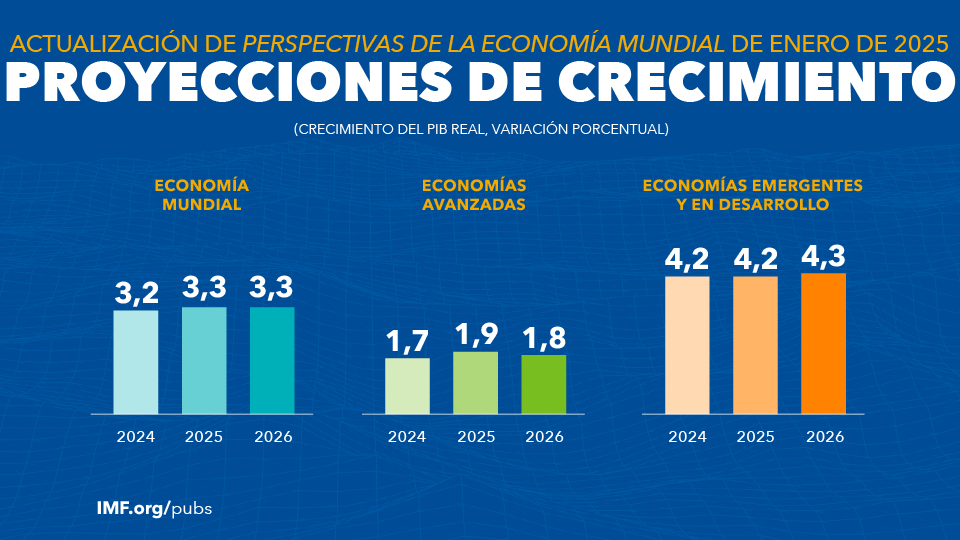
The International Monetary Fund (IMF) has updated its economic growth projections for Latin America and the Caribbean, estimating an increase of 2.5% in 2025 and 2.7% in 2026. These figures reflect a performance similar to that projected by the World Bank, which forecasts growth of 2.5% in 2025 and 2.6% in 2026. These values underscore the challenge of achieving a more dynamic pace of expansion in the region in the face of a global environment of moderate growth.
Globally, the IMF forecasts growth of 3.3% for both 2025 and 2026, figures that remain below the historical average of 3.7% recorded between 2000 and 2019. According to the World Economic Outlook (WEO) report, upward revisions for the United States balance downward adjustments in other major economies, keeping the overall outlook relatively stable compared to october 2024.

In terms of inflation, global inflation is expected to continue its downward trend, reaching 4.2% in 2025 and 3.5% in 2026. However, this adjustment will be faster in advanced economies than in emerging and developing economies, evidencing a divergence in economic recovery and price control at the global level.
The IMF also highlights differences in projected growth between advanced and emerging economies. In 2025, advanced economies would grow by 1.9%, while emerging economies would reach 4.2%. By 2026, the figures would be 1.8% and 4.3%, respectively, reflecting greater resilience in emerging markets despite structural and cyclical challenges.

This outlook underscores the importance of economic policies that strengthen inclusive and sustainable growth in Latin America and the Caribbean, while addressing challenges such as reducing inequality and strengthening macroeconomic stability in an evolving global context.







